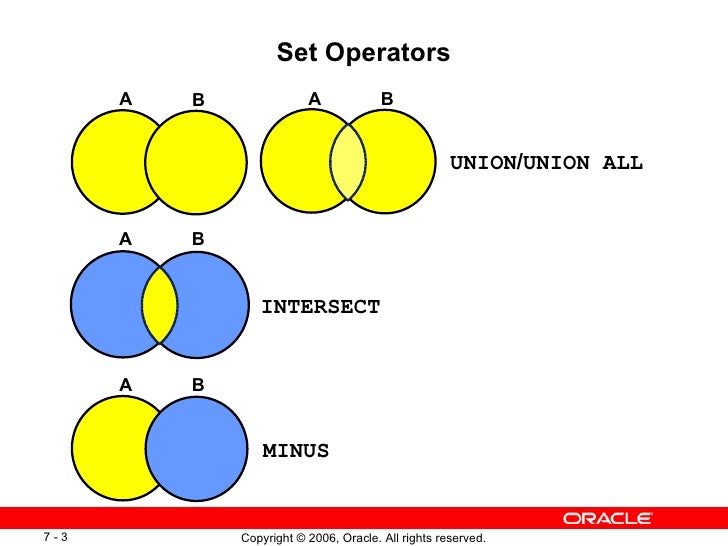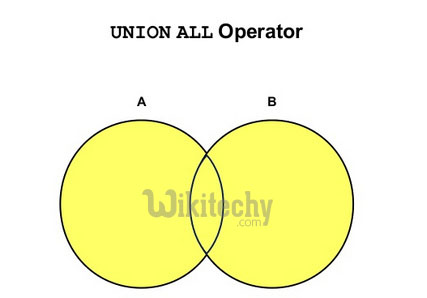
Currently Derby uses sorting to eliminate duplicates from a UNION. You can use UNION ALL to avoid sorting, but UNION ALL will return duplicates. So you only use UNION ALL to avoid.
Example - Using ORDER BY. The UNION ALL is combining the sets. A UNION is wastefull because the sets could not be the same, because the ordered field is different.
The UNION removes duplicate while the UNION ALL does not. The question whether UNION needs ORDER BY is very different from whether UNION ALL needs order by , because the former must look for duplicates and remove them, whereas the latter merely glues to result sets together. Hence nobody should ever expect UNION to preserve the order , whereas such would be possible with UNION ALL. However, as stated already, even UNION ALL is not guaranteed to. In diesem Lernprogramm wird die Verwendung des SQL Operators UNION ALL mit Syntax und Beispielen erläutert.
Der SQL UNION ALL Operator wird verwendet, um die Ergebnismengen von oder mehr SELECT-Anweisungen zu kombinieren. You can combine multiple queries using the set operators UNION, UNION ALL, INTERSECT, and MINUS. All set operators have equal precedence. SQL SERVER – UNION ALL and ORDER BY – How to Order Table Separately While Using UNION ALL.
SQL, SQL Server, SQL Tips and Tricks. I often see developers trying following syntax while using ORDER BY. If there is no ORDER BY clause, the output rows can appear in any order. As you know union removes duplicated rows. Secon even without parentheses (which here would mean a subquery for the UNION ALL , with ORDER BY in the outer query), ORDER BY placed after UNION ALL will apply to the entire result set of UNION ALL (and not just to the last branch of the UNION ALL operation).
Der SQL-Befehl UNION ALL vereinigt ebenfalls die Ergebnismengen zweier Abfragen. Der Unterschied zwischen UNION ALL und UNION besteht darin, dass mit UNION nur unterschiedliche Werte ausgewählt werden, während bei UNION ALL alle Werte, also auch mehrfach vorkommende Ergebnistupel erhalten bleiben. Die Syntax für UNION ALL sieht. In diesem UNION ALL -Beispiel wird eine product_id mehrmals in Ihrer Ergebnismenge zurückgegeben, wenn die product_id sowohl in der products als auch in der inventory Tabellen enthalten wäre. Der SQL Server UNION ALL -Operator entfernt keine Duplikate.
Wenn Sie Duplikate entfernen möchten, verwenden Sie den SQL Server UNION -Operator. SQL文で UNION ALL で2つSELECT文を結合するのですが、次のように1つのSELECT文にTOP句があるため、SELECT. Oracle оператор UNION ALL не удалит дубликаты.

The AskTOM team is taking a break over the holiday season. You can still search the repository of over 20questions answered. Thanks for being a member of the AskTOM community. They combine the of two or more queries. When using the Set operators.
Each SELECT clause must have the same number of column.
Keine Kommentare:
Kommentar veröffentlichen
Hinweis: Nur ein Mitglied dieses Blogs kann Kommentare posten.